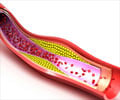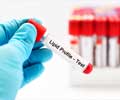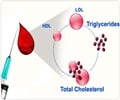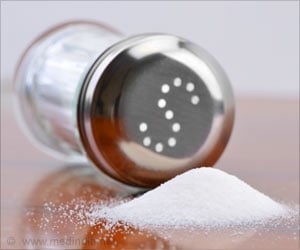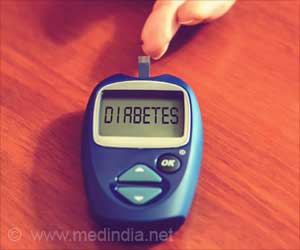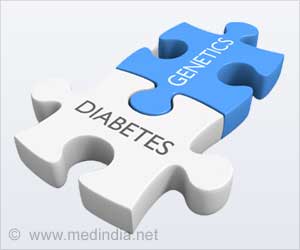Diabetes patients tend to concentrate more on their blood sugar and ignore the need to lower the cholesterol level. That could result in certain death. Time focus changed.
If blood sugar level is not under control, one could end up blind or lose a leg. Worse kidneys could fail. Hence dieting, counting carbohydrates and monitoring the blood sugar level are all important.
But doing all that does not protect one against heart disease, which eventually kills nearly everyone with diabetes, experts point out.Nearly 73,000 Americans die from diabetes annually, more than from any disease except heart disease, cancer, stroke and pulmonary disease.
Yet, largely because of a misunderstanding of the proper treatment, most patients are not doing even close to what they should to protect themselves. In fact, according to the federal Centers for Disease Control and Prevention, just 7 percent are getting all the treatments they need.
'That, to me, is mind-boggling,' said Dr. Michael Brownlee, director of the JDRF International Center for Diabetic Complications Research at the Albert Einstein College of Medicine in New York. 'It makes me ask, What is going on? I can only conclude that people are not aware of their risks and what could be done about them.'
The science is clear on the huge benefits for people with diabetes of lowering cholesterol and controlling blood pressure. After multiple studies, costing hundreds of millions of dollars and involving tens of thousands of subjects, national guidelines were rewritten to reflect the new data, and professional organizations issued recommendations for diabetes care.
With cholesterol, the guidelines say that levels of LDL cholesterol, the form that increases heart disease risk, should be below 100 milligrams per deciliter and, if possible, 70 to 80.
Advertisement
The key to saving lives is to reduce levels of LDL cholesterol to below 100 and also control other risk factors like blood pressure and smoking. The cholesterol reduction alone can reduce the very high risk of heart attacks and death from cardiovascular disease in people with diabetes by 30 percent to 40 percent.
Advertisement
Yes, part of the problem is primary care doctors who might have had just a few hours of instruction on diabetes, while they were in medical school and who spend barely ten minutes with diabetics.
Again public health campaigns that give the impression that diabetes is a matter of an out-of-control diet and sedentary lifestyle and the most important way to deal with it is to lose weight.
Obesity does increase the risk of developing diabetes, but the disease involves more than being obese. Only 5 percent to 10 percent of obese people have diabetes, and many with diabetes are not obese. To a large extent, Type 2 diabetes is genetically determined — if one identical twin has it, the other has an 80 percent chance of having it too. In many cases, weight loss can help, but, most who lose weight are not cured of the disease.
'Everybody in the act of losing weight will have a pretty dramatic improvement pretty quickly,' said Dr. C. Ronald Kahn, a diabetes researcher and professor of medicine at Harvard Medical School. Blood sugar levels drop precipitously and the disease seems to be under control. But that is because the metabolic process of weight loss lessens diabetes. Once weight is lost, he added, and people stabilize at a lower weight, their diabetes may remain.
The statistics are grim: A quarter to a third of all heart attack patients have diabetes, even though diabetes patients constitute just 9.3 percent of the population. Another 25 percent of heart attack patients are verging on diabetes with abnormally high blood sugar levels.
Most worrisome are diabetes patients who already have symptoms of heart disease, like chest pains or a previous heart attack.
Cholesterol lowering, for patients with Type 1 and Type 2 diabetes, is seen as the most effective and easiest way by far to reduce the risk of heart disease and the only treatment proven to save lives.
Doctors also say achieving the recommended cholesterol levels usually means taking a statin.
Statins are a class of drugs that lowers the level of cholesterol in the blood by reducing the production of cholesterol by the liver. Statins block the enzyme in the liver that is responsible for making cholesterol.
But then statins have few important side effects. The most common side effects are headache, nausea, vomiting, constipation, diarrhea, rash, weakness, and muscle pain. The most serious (but fortunately rare) side effects are liver failure and rhabdomyolysis.
Rhabdomyolysis is a serious side effect in which there is damage to muscles. It often begins as muscle pain and can progress to loss of muscle cells, kidney failure, and death.
Naturally many are frightened away from this class of drugs. But the point is not to run away but to take appropriate medical counseling.
For diabetics the first priority should be to take a statin and lower the LDL cholesterol level, many doctors insist.
Dr. Brownlee, quoted above said that the two other measures to protect against heart disease, blood pressure control and taking an aspirin to prevent blood clots, should not be neglected.
'Right now, without waiting for lots of exciting things that are almost in the pipeline or in the pipeline, starting tomorrow, if everyone did these things — taking a statin, taking a blood pressure medication, and maybe taking an aspirin — you would reduce the heart attack rate by half.'
'We need patient education and physician training that this stuff is out there and this is what we should be focusing on to make a difference in lives.'
Source-Medindia
GPL/J


